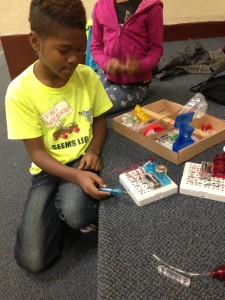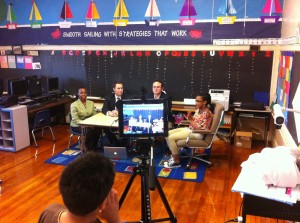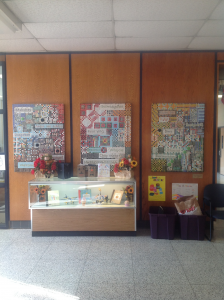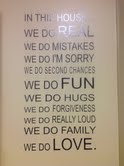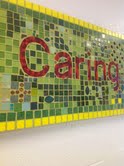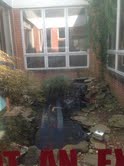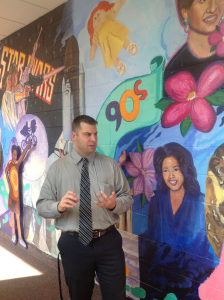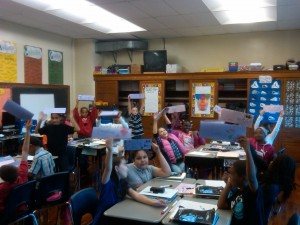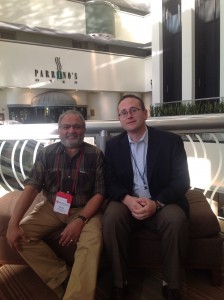One of our 5th grade classes recently conducted a “make over” on their class. This idea emerged after a group of students requested a “real” 21st Century learning environment. Their teacher, Mr. Hudson, asked them, “So, what does that look like?” Well, they took him up on the challenge and asked if they could replace their desks with tables in order to increase collaboration. They told their teacher that they really liked his teaching, but they learn more when he lets them take what they learn and “run with it” through a variety of projects and activities with their classmates. “Fine,” he said, “Then what?” Well, then they said they each wanted their own device (ipod touch, ipad, computer, or laptop, etc.). “OK,” he replied, “I might not be able to get one-to-one in here, but we can get pretty close.” They compromised…for now.
Here is the imovie trailer the students made about their classroom make over:
So after they completed their filming project with Pearson’s EnVision Math (Yes, they were picked out of hundreds of classrooms to highlight the new math program) we treated them to new tables. They really have been working hard this year! Did I mention that they are all avid bloggers? This class, through kidblog.org has been actively blogging before, during and after school not to mention the weekends and some long after they should have been sleeping. Their blog, Bear Necessities, is comprised of the teacher, the entire class, librarian, principal, parents, and even former students. This learning environment allows them to create ideas, complete class projects, and pontificate on what the town needs to do to improve. Did I mention that this is all optional and not required by the teacher? Neither is the “H” word… Homework. Students in this class have designed their own learning games, study guides, and blogs in the most self-directed manner…. because they want to, because the culture of the room encourages it, because no one has to tell them no. It’s a culture of yes, a culture of innovation, of experimentation.
Recently, Mr. Hudson’s class enthusiastically accepted a unique opportunity to host TeacherCast for RM Bacon’s FIRST EVER live podcast. The students invited the superintendent, assistant superintendent, and me for a 45 minute session on education. They read our blogs, tweets, and even our resumes to formulate their questions for the podcast. In fact, TeacherCast was so impressed with these kids that he is starting a section on his website for students!
Administrative walkthrough reports from this class have produced some interesting data trends. 27% of the observed time, this class has been engaged in Generating and Testing Hypothesis, specifically problem solving. 100% of the time the students have been able to articulate the learning objective. 94% of the time there has been teacher directed technology, and 100% student directed technology. As for student grouping, the class was observed (Whole group 33%; Individual 6%; Small Group 44%; Cooperative Group 11%; Pair 6%).
After applying what they have been learning through technology, the students realized they hit a glass ceiling in terms of their classroom infrastructure. Ironically, the walk-through data supported their findings, reflecting cooperative group activities identified 11% of the observed time. Hmm, it makes me think how cool would it be to pilot student walk-through’s? Empowered with problem-solving skills, they analyzed their current situation, evaluated what they needed to enrich their learning experiences, and are now in the midst of creating their very own 21st century learning environment. Our students are truly “Bloom-ing” in their very own and student-designed 21st Century classroom.
Resources:
Classroom Instruction That Works, 2nd Edition
